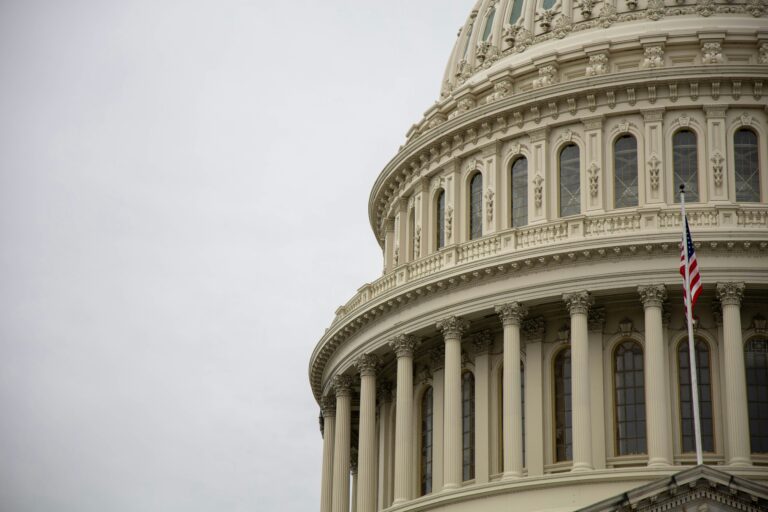
Elections are the foundation of democratic governance, providing citizens with the opportunity to choose their leaders and influence the direction of government. However, how votes are counted and translated into political power can vary significantly depending on the electoral system in place. Two of the most common electoral systems are First-Past-the-Post (FPTP) and Proportional Representation (PR). Each system offers distinct advantages and disadvantages, particularly in terms of fairness, political representation, and governance.
This article explores and compares the First-Past-the-Post and Proportional Representation electoral systems, analyzing their strengths, weaknesses, and their impact on political outcomes. Ultimately, we aim to answer the question: which system is fairer?
First-Past-the-Post (FPTP)
First-Past-the-Post (FPTP), also known as “plurality voting,” is one of the oldest and simplest electoral systems. It is used in several democracies around the world, including the United States, the United Kingdom, Canada, and India. In an FPTP system, voters cast their ballots for a single candidate in their electoral district (or constituency), and the candidate with the most votes wins, regardless of whether they have secured an absolute majority (over 50% of the vote).
- How FPTP Works
In an FPTP system, the country is divided into constituencies, each of which elects one representative. Voters choose one candidate, and the candidate with the most votes wins the seat. This winner-takes-all approach means that only one candidate can represent a constituency, and the votes for all other candidates are essentially “wasted” in terms of representation.
For example, in a three-candidate race, Candidate A could win 40% of the vote, Candidate B could get 35%, and Candidate C could receive 25%. Under FPTP, Candidate A would win the seat, even though 60% of voters did not choose them.
- Advantages of FPTP
- Simplicity: FPTP is straightforward for voters to understand and administer. Each voter selects a single candidate, and the candidate with the most votes wins. This simplicity can make it easier to count votes and declare results quickly.
- Strong, Stable Governments: FPTP tends to produce strong, single-party governments. Because the system often results in a clear winner, it is less likely to produce coalition governments that can be unstable or prone to infighting. In countries like the U.K. and the U.S., FPTP has contributed to stable governments that can implement their policies without the need for coalition partners.
- Clear Constituency Representation: Each representative in an FPTP system is directly accountable to a specific constituency, making it easy for voters to know who represents them and hold that representative accountable. The local focus of FPTP can strengthen the bond between representatives and their constituents.
- Disadvantages of FPTP
- Disproportionate Representation: One of the main criticisms of FPTP is that it often leads to disproportionate representation. Because the system does not require a candidate to win a majority of votes, it is possible for a party to win a large number of seats with only a minority of the popular vote. For example, in the 2015 U.K. general election, the Conservative Party won 36.9% of the popular vote but secured 50.9% of the seats in Parliament. This creates a situation where the distribution of seats in the legislature does not accurately reflect the preferences of the electorate.
- Wasted Votes: In FPTP, votes for losing candidates are essentially “wasted” because they do not contribute to representation. This can discourage voter turnout, especially for supporters of smaller parties, who may feel that their vote has little chance of influencing the outcome.
- Exclusion of Smaller Parties: FPTP tends to favor larger, established political parties, making it difficult for smaller or emerging parties to gain representation. This often leads to a two-party or limited multi-party system, as seen in the U.S. and U.K., where smaller parties struggle to win seats even if they have significant national support.
- Tactical Voting: Voters in FPTP systems may engage in tactical voting, where they vote for a candidate they believe has the best chance of defeating a less-preferred candidate, rather than voting for their preferred candidate. This can distort the true preferences of the electorate and undermine the democratic principle of voting for the candidate who best represents the voter’s views.
Proportional Representation (PR)
Proportional Representation (PR) is an electoral system that seeks to allocate seats in the legislature in proportion to the number of votes each party receives. PR systems come in several forms, including party-list proportional representation, mixed-member proportional representation (MMP), and single transferable vote (STV). Countries that use PR include Germany, the Netherlands, Sweden, and South Africa.
- How PR Works
In its simplest form, PR allocates seats in the legislature based on the percentage of the vote that each party receives. For example, if a party wins 30% of the vote, it will receive approximately 30% of the seats. This ensures that the composition of the legislature reflects the diversity of political preferences among the electorate.
Different types of PR systems operate in slightly different ways:
- Party-List PR: Voters cast their ballots for a party, and parties are awarded seats based on their share of the vote. In some cases, voters can also rank candidates within party lists.
- Mixed-Member Proportional Representation (MMP): Combines FPTP with a proportional component. Voters have two votes—one for a candidate to represent their district and one for a party. The proportional vote is used to balance out the district-based seats so that the overall composition of the legislature reflects the national vote.
- Single Transferable Vote (STV): Voters rank candidates by preference, and candidates are elected through a process of redistributing votes until all seats are filled proportionally.
- Advantages of PR
- Fairer Representation: The primary advantage of PR is that it creates a more accurate reflection of the electorate’s preferences. Since seats are distributed in proportion to the votes each party receives, smaller parties and minority groups are more likely to gain representation. This helps to ensure that the legislature mirrors the diversity of political opinion within the country.
- Reduced Wasted Votes: Because PR systems allocate seats in proportion to votes, fewer votes are “wasted” compared to FPTP. Even votes for smaller parties contribute to the overall composition of the legislature, making every vote count.
- Encourages Multi-Party Systems: PR systems are more likely to produce multi-party legislatures, which can encourage greater political diversity and give voters a wider range of choices. In countries with PR, such as the Netherlands and Germany, coalition governments are common, reflecting a broader spectrum of political views.
- Increased Voter Engagement: In PR systems, voters may feel more empowered to vote for the party or candidate that best represents their views, rather than engaging in tactical voting. Knowing that their vote will contribute to the overall outcome can lead to higher voter engagement and turnout.
- Disadvantages of PR
- Coalition Governments: While PR can lead to more representative legislatures, it often results in coalition governments, where multiple parties must work together to form a majority. Coalition governments can be less stable than single-party governments and may require compromises that dilute policy agendas. In some cases, coalition governments can be prone to infighting, leading to gridlock or frequent changes in leadership.
- Complexity: PR systems can be more complex than FPTP, both for voters and election administrators. Some PR systems, such as STV, require voters to rank candidates or parties, which can be confusing. Additionally, the process of allocating seats can be more difficult to understand than the simple majority rule of FPTP.
- Fragmentation: PR systems can lead to a highly fragmented legislature with many small parties. While this can enhance representation, it can also make it difficult to form a cohesive government. In some cases, extremist parties may gain seats, which can complicate governance and undermine political stability.
Comparing FPTP and PR: Which System is Fairer?
The question of which system is fairer—FPTP or PR—depends on how one defines fairness in the context of elections. Both systems have their strengths and weaknesses, and their impact on political representation varies based on the priorities of a given society.
- Fairness in Representation
In terms of representation, PR is generally considered to be the fairer system. PR ensures that the composition of the legislature closely reflects the proportion of votes each party receives, providing a more accurate representation of the electorate’s preferences. By contrast, FPTP often distorts representation, leading to disproportionate outcomes where the winning party secures a majority of seats with only a minority of the vote.
For those who prioritize proportionality and inclusivity in elections, PR is the fairer system because it gives smaller parties and minority groups a better chance of gaining representation.
- Fairness in Governance
However, if one defines fairness in terms of stable and effective governance, FPTP may be seen as the better system. FPTP tends to produce single-party governments that can implement policies without the need for coalition-building. This can lead to more decisive governance and fewer political compromises. PR, on the other hand, often results in coalition governments that require parties to negotiate and share power, which can slow down decision-making and make it difficult to pass legislation.
For those who prioritize stability and strong governance, FPTP may be considered the fairer system because it tends to produce clearer electoral outcomes and stronger governments.
- Fairness in Political Competition
FPTP is often criticized for creating a system where only two or a few major parties can realistically compete for power, effectively marginalizing smaller parties. PR, by contrast, encourages a multi-party system, which provides voters with more options and ensures that a wider range of political views is represented. In this sense, PR is fairer in fostering a more competitive and diverse political landscape.
Conclusion
The question of whether First-Past-the-Post or Proportional Representation is the fairer electoral system ultimately depends on what aspect of fairness one values most. PR offers a more accurate reflection of voter preferences, making it the fairer system in terms of representation and inclusivity. It ensures that all votes count and gives smaller parties a voice in the legislature.
On the other hand, FPTP provides clearer outcomes and tends to produce stronger, more stable governments, making it the fairer system for those who prioritize effective governance. However, its tendency to distort representation and marginalize smaller parties raises significant concerns about fairness in terms of political equality and competition.
Ultimately, the choice between FPTP and PR reflects the priorities of each society. A system that balances representation, stability, and inclusivity is ideal, though achieving such balance is a complex challenge for democracies worldwide.



